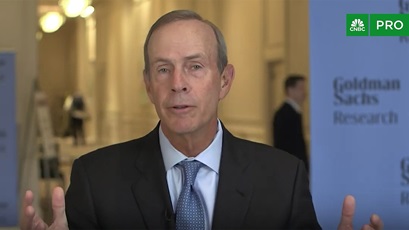emissions solutions
lower carbon world is accelerated through collaboration
3 min read | may 24, 2024
Jeff Gustavson is president of Chevron New Energies.
In a recent LinkedIn article, Jeff Gustavson, president of Chevron New Energies, explained why working together is vital as the world moves toward a lower carbon future.
Here are some takeaways from the article:
- All industries need to participate in reducing carbon emissions at scale and driving down cost and risk.
- Optimistic and diverse viewpoints can help deliver the best solutions.
- Policies can help move the world toward its lower carbon goals.
Read Gustavson’s full article below:
collaboration: the unsung hero of the energy transition
By Jeff Gustavson, president, Chevron New Energies
While much of the conversation surrounding the energy transition rightly focuses on technology, geopolitics, consumer attitudes and public policy, I believe we’re not devoting enough attention to a vital element of the lower carbon dialogue: collaboration.
This conviction was reinforced during the recent BloombergNEF Summit in New York. At the summit, I joined U.S. and global energy policymakers, leaders from established global corporations and startups, journalists, finance professionals – serious people with serious goals. We each brought diverse – and sometimes divergent – points of view, but our conversation was constructive, civil and stimulating, held in a spirit of shared aspirations.
Given the scope of global CO2 emissions – collaboration belongs at the center – not just in forums like BNEF – but in every conversation. Energy drives human progress, and global energy demand is growing. More energy, and more forms of energy, will be required to meet future demand – and that energy must be lower carbon. It’s a big challenge; meeting it demands dialogue that recognizes the need to consider every technology, innovation, perspective and solution that can help achieve the goal.
Even the most ambitious CO2 reduction models include a role for fossil fuels. This means continuing to evolve traditional energy products, including solutions like renewable and lower carbon intensity fuels. It also means scaling new energy options and industries – often by leveraging traditional energy processes and technologies, like subsurface exploration for carbon capture utilization and storage, as well as hydrogen development, or horizontal drilling to produce geothermal energy.
Realizing the promise of these technologies requires innovation across the value chain. Collaboration will be indispensable – with customers, partners, small companies, large companies, governments, and more.
Achieving bold ambitions to reduce emissions means all industries must participate, so we must work together to drive down the cost and risk of innovation. How can we collaborate more aggressively? How can we lower costs faster? How can we bring forward all of the collective capabilities we have to bear?
Constructive policy development will be crucial. This offers yet another opportunity for coalitions and cooperation that can advance lower carbon progress.
The challenges are real, and the headlines are often dispiriting. But the fact is, both inside and outside the energy industry – at tech companies and universities, from large companies to small startups – we are making progress.
More often than not, this progress is being achieved through an exchange of ideas and a mindset that is diverse, passionate and optimistic. This is the kind of thinking and commitment that delivers solutions to the biggest challenges we face.
When it comes to reducing CO2 emissions, collaboration is key to progress. And progress generates more progress, creating the virtuous cycle of innovation and momentum needed to achieve our global goals. This is how breakthroughs are made, new markets are created and new industries are born.
topics covered
related content
-

 chevron CEO discusses the future of energy
chevron CEO discusses the future of energyemissions solutionsjanuary 20, 2025
-

 novel ideas, established companies key to advancing lower carbon tech
novel ideas, established companies key to advancing lower carbon techemissions solutionsjanuary 14, 2025
-

 chevron CEO talks growing production, efficient spending
chevron CEO talks growing production, efficient spendingemissions solutionsdecember 18, 2024
-

 1st US hydrogen-powered passenger ferry open for business
1st US hydrogen-powered passenger ferry open for businessalternative fuelsaugust 23, 2024
chevron email updates
Subscribe to our newsletter to receive news and updates.



